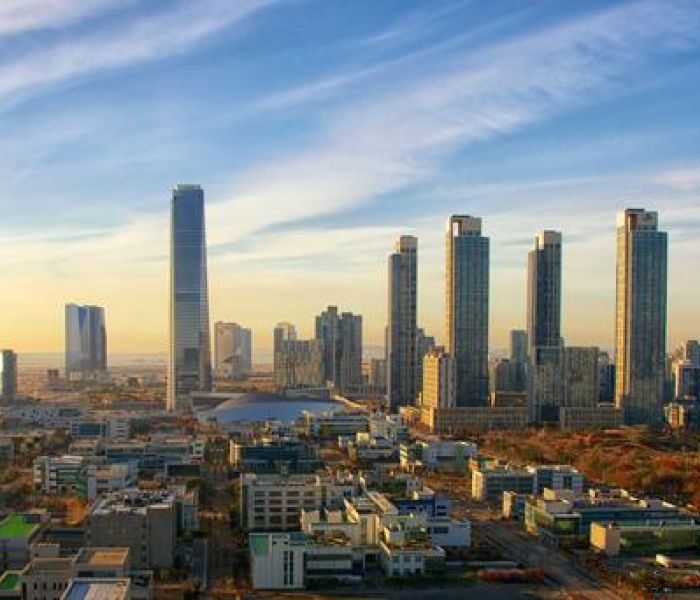Masdar City, United Arab Emirates – This gleaming example of sustainable urban living just 17km east of Abu Dhabi is currently more university and business campus than metropolis, but when Masdar City is complete in 2025, it will be home to 40,000 residents and 50,000 commuters. The city’s master plan, designed by the architects Foster + Partners, put roads underground (and bans cars that use petrol), allowing for very narrow pedestrian streets that capture and funnel the breezes, aided and shaded by thick city walls, a technique Arab builders have used for centuries. The city’s modern elements come in the renewable energy and clean tech sources being developed at the Masdar Institute of Science and Technology, which currently houses 250 students on campus. The city is completely powered by renewable energy sources such as solar, and the buildings are being constructed with recycled materials, including steel and aluminium. Energy and potable water demands have been reduced by more than 50%, using a quarter of the energy of a conventional city the same size. “We are addressing social, economic and environmental sustainability and also making sure it’s affordable,” said Omar Zaafrani, communications manager for Masdar City. The building that houses both the Masdar and International Renewable Energy Agency headquarters will have stores and restaurants in addition to office space, powered by 1,000sqm of photovoltaic panels. While no residential buildings beyond dormitories have been built, they are in the works. “There are various residential plots around the city, and over the coming years they will be tendered out to global architects,” Zaafrani explained. The city’s economic free zone – with zero taxes, import tariffs or restrictions on foreign hires – is set up to specifically attract clean energy and tech companies, clustering them together in incubator office buildings. “The number one target is people who work in Abu Dhabi and around the UAE,” Zaafrani said. “We are trying to make sure as we build up the city, there will be demand for both commercial and residential spaces.” Currently, a four-bedroom villa in central Abu Dhabi rents for around 200,000 dirhams a year, while a two-bedroom flat in Reem Island rents for around 100,000 dirhams. Over the next two years, 45,000 new flats and houses will come available.
Living in Sustainable Cities of the Future
0 Comments | June 20, 2013



Comments